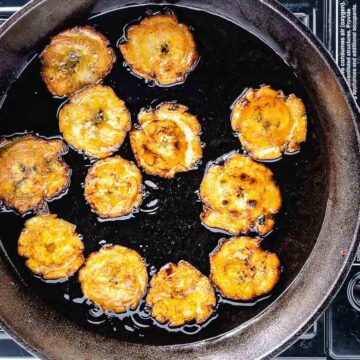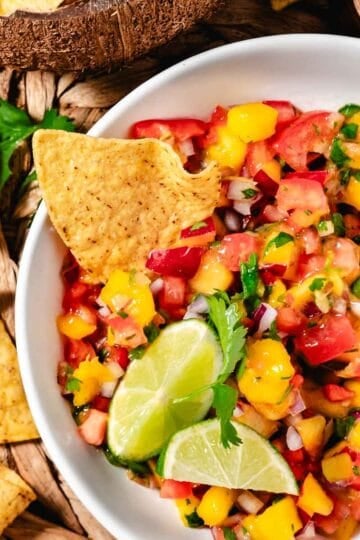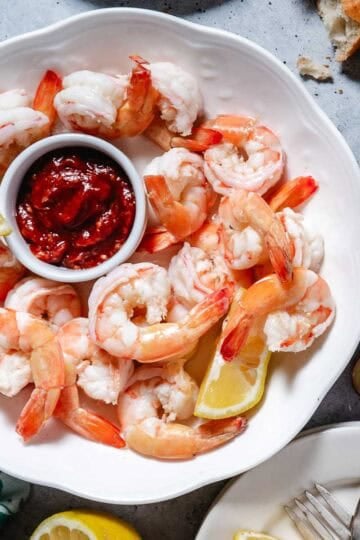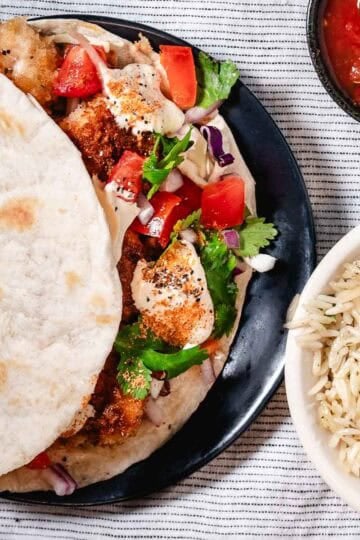Twice-fried plantains, or tostones, are a crispy and savory side dish made with unripe green plantains. The plantains are sliced, fried, smashed, and then fried again to create a golden, crunchy exterior while keeping the inside tender. Pair them with Mayo-Ketchup, a creamy, slightly sweet dipping sauce, for a perfect bite.
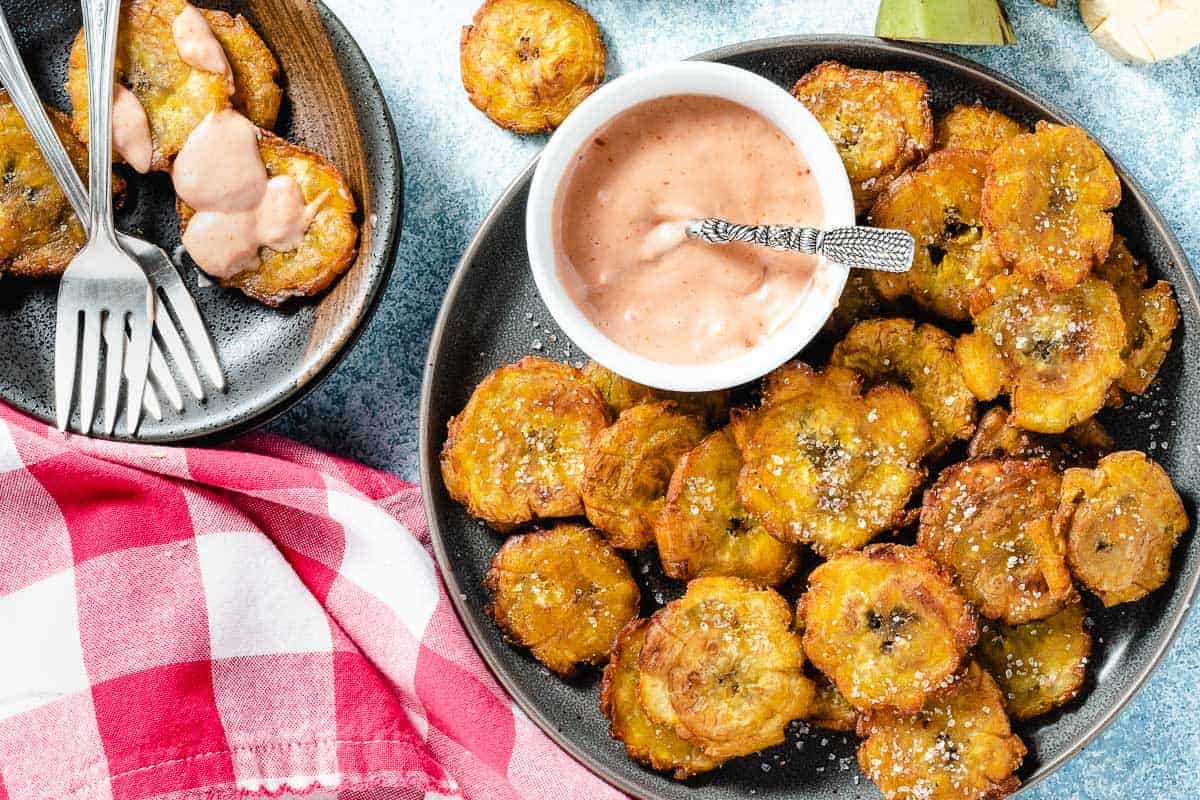
Jump to:
- What are Plantains? They Look Like Bananas!
- How to Purchase and Store Plantains
- What You Need to Make Tostones
- How to Peel Plantains
- How to Make Fried Plantains
- How to Smash the Plantains
- Mayo Ketchup Pink Dipping Sauce
- What to Do with Black Plantains
- What are Platanos Maduros?
- How To Store Tostones
- Serving Suggestions
- Recommended
- FAQ
- Twice Fried Plantains with Mayo Ketchup
What are Plantains? They Look Like Bananas!
Don't be fooled by plantains! Even though they look like bananas, plantains are a different fruit. They have thicker skin and are less sweet, which makes them perfect for cooking.
Unlike bananas, which are easy to peel, the skin of a plantain is so thick it has to be cut off. As plantains ripen, their skin turns from green to yellow to black, and the fruit becomes sweeter.
Plantains are starchy and have less sugar than bananas, which makes them great for frying, boiling, baking, or grilling. They are a popular food in Latin and Caribbean cooking.
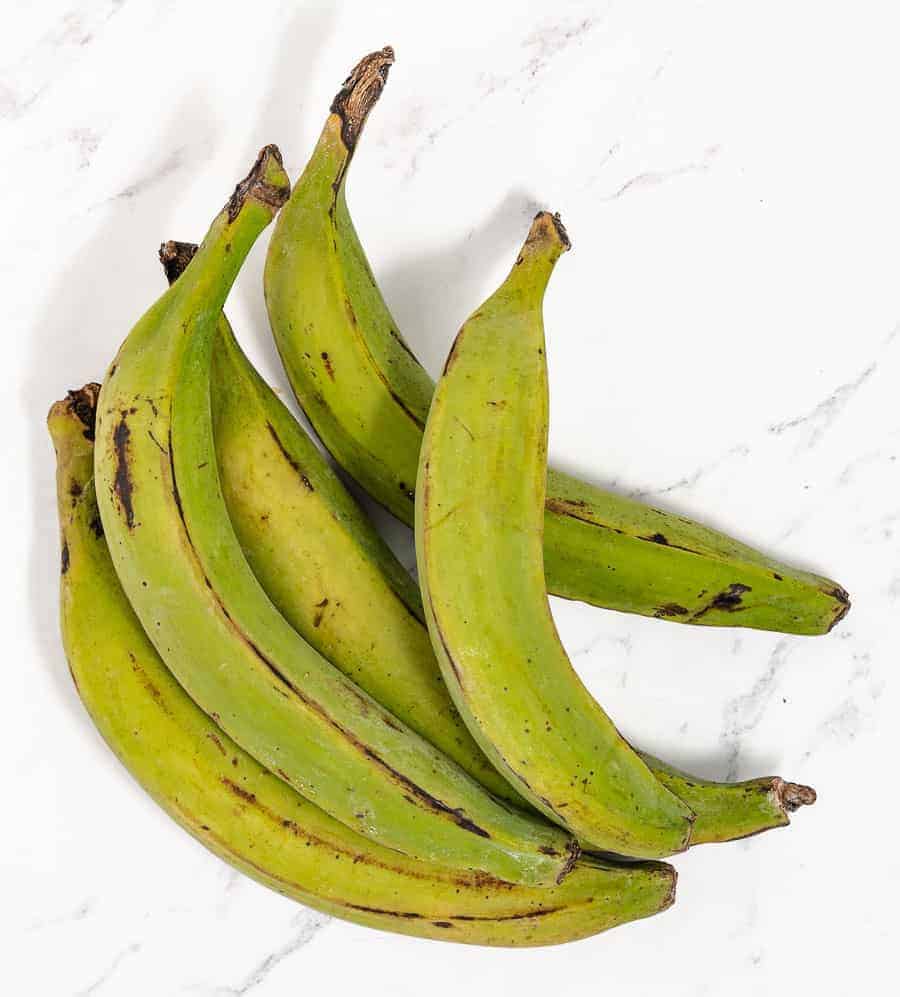
How to Purchase and Store Plantains
Plantains, which look like green bananas, are commonly found in the produce section of most grocery stores near the bananas.
As plantains ripen, their skin changes color from green to yellow to dark brown or black, offering various levels of sweetness and flavor.
For making tostones, choose green plantains. Store them at room temperature, and they will gradually ripen—turning yellow after a few days and brown as they continue to ripen.
Ripe, brown plantains are sweeter due to their higher sugar content and are perfect for dishes with a sweeter flavor.
What You Need to Make Tostones
- Green Plantains: Use unripe or green plantains for tostones. Their starchy, firm texture makes them perfect for frying and achieving that crispy exterior.
- Oil: Tostones are fried, so they need a neutral oil with a high smoke point, such as vegetable or coconut oil, to make them golden and crispy.
- Coarse Salt: After frying, sprinkle your tostones with coarse or kosher salt to bring out their flavor and add a little extra crunch.
- Mayo Ketchup: Combine mayonnaise, ketchup, and minced garlic cloves to create a dipping sauce for your tostones.
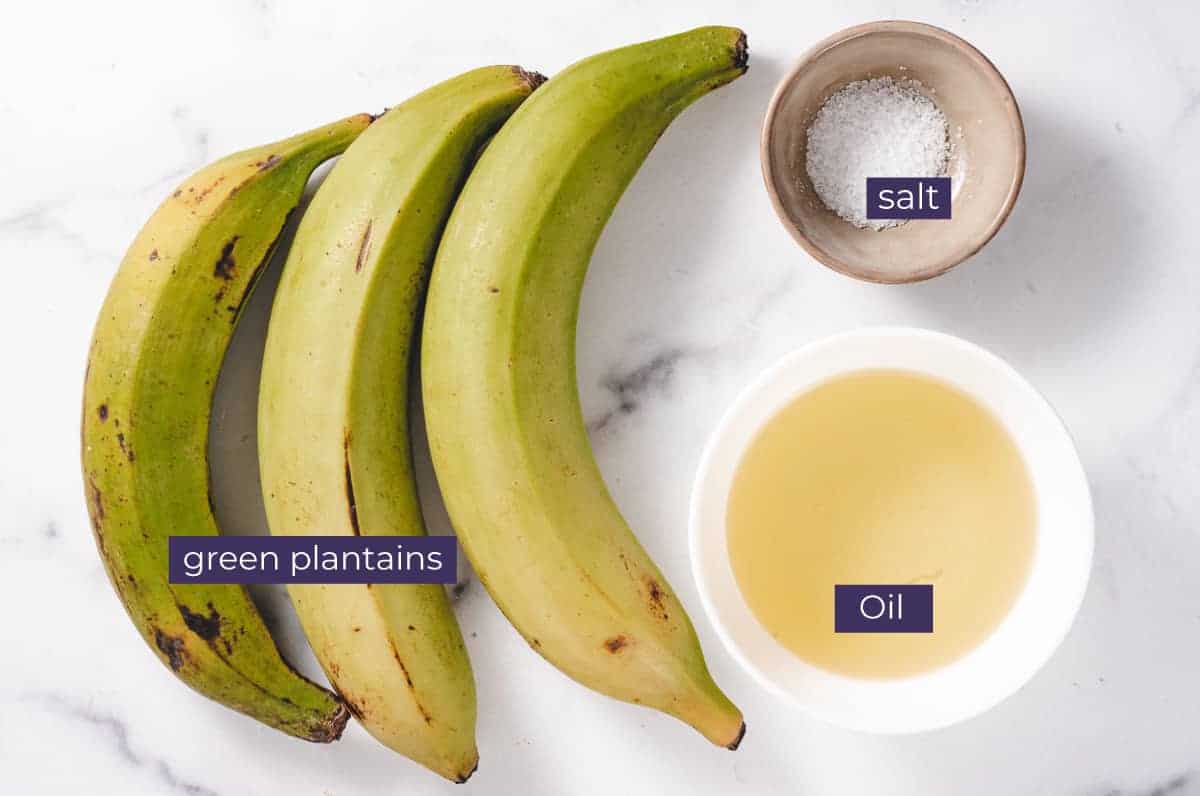
How to Peel Plantains
Peeling plantains is the trickiest part of preparing them, as it differs from peeling bananas. Instead of peeling from top to bottom, you'll need to remove a vertical strip of the fruit and pull the skin off across the plantain.
If the skin resists, make additional slits on the opposite side and repeat the process until the peel comes off.
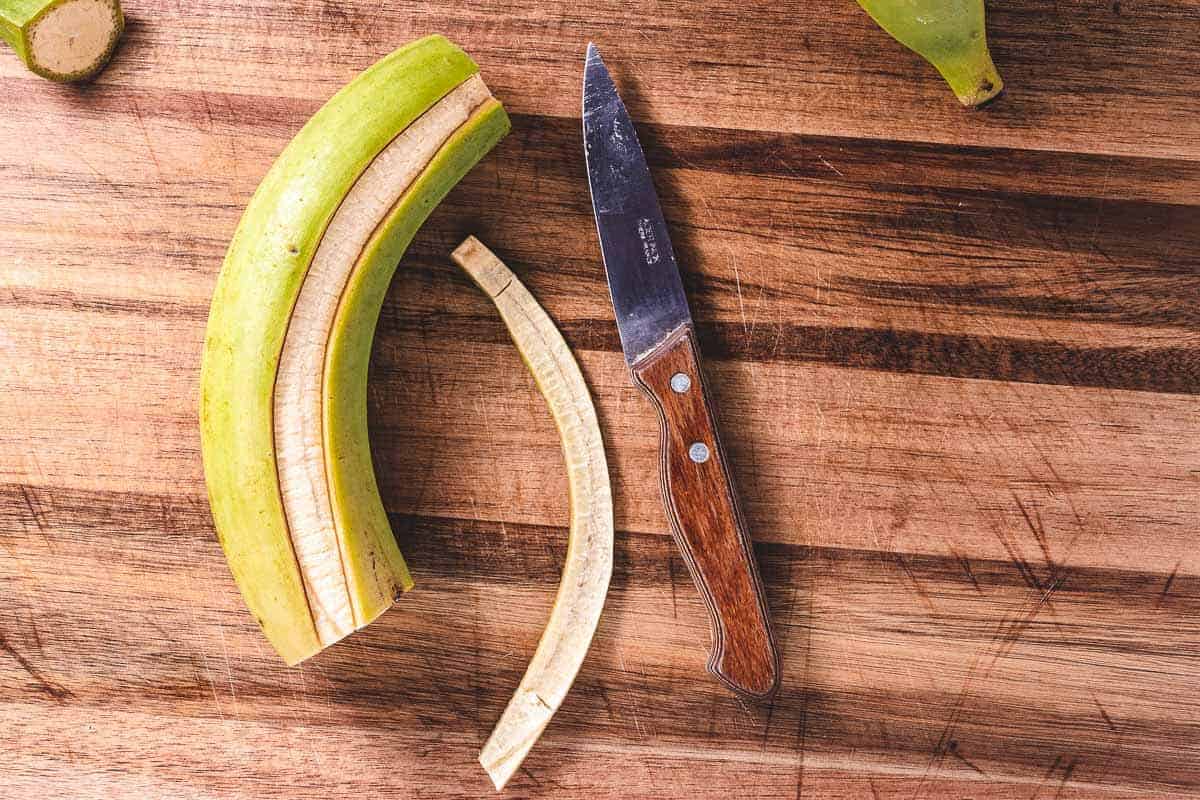
- Start by slicing off the tips of the plantain with a small knife.
- Create two shallow slits down the length of the plantain, being careful not to cut into the flesh.
- Insert the knife tip under the skin between the cuts and lift it slightly to make peeling easier.
- Grasp the peel in the middle and pull horizontally, unlike a banana's vertical peel.
How to Make Fried Plantains
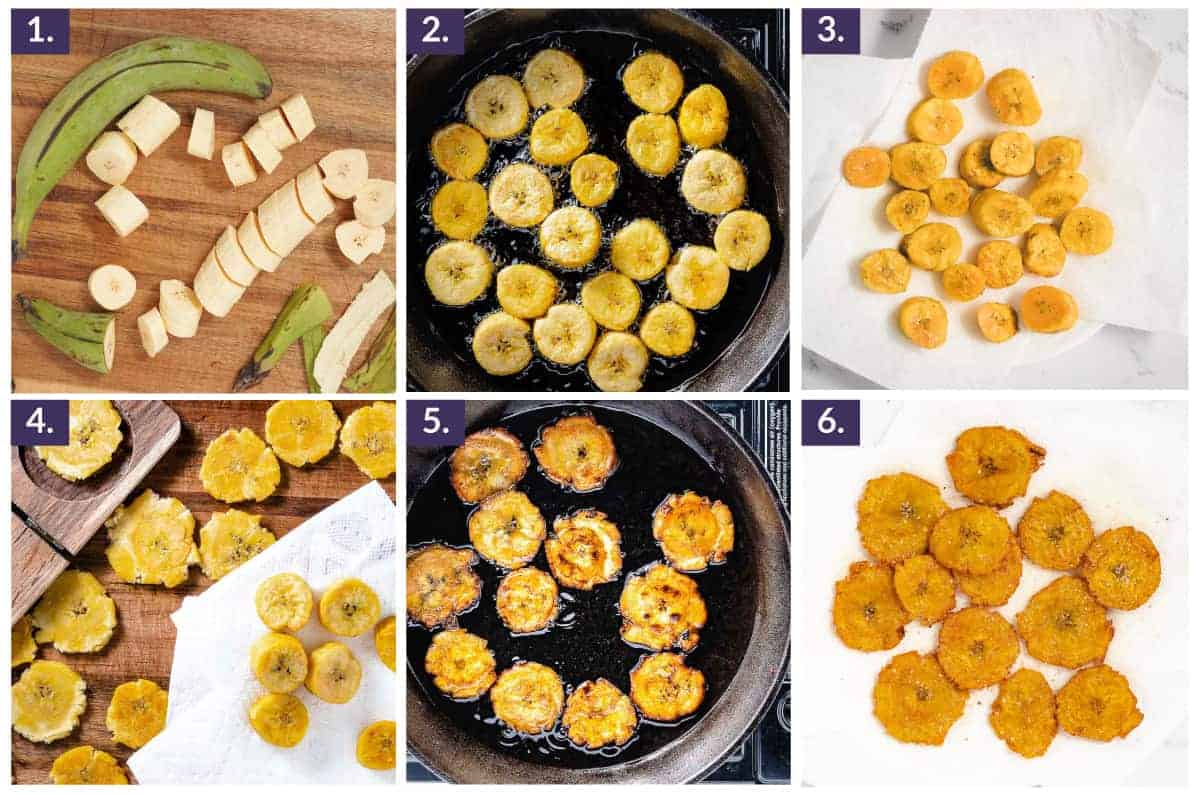
- Slice the peeled plantains into 1-inch thick slices.
- Heat oil over medium heat in a heavy-bottomed skillet until it shimmers (about 3 to 5 minutes). Carefully add the plantain slices and cook for 1 ½ minutes until they turn golden and firm. Lower the heat slightly.
- Remove the plantains from the skillet with a slotted spoon and place them on a plate lined with paper towels to drain excess oil.
- Flatten each plantain slice using a tostonera (a plantain press), the bottom of a glass or the flat side of a meat mallet.
- Increase the heat again and return the flattened plantains to the hot oil. Fry for 2 minutes per side until they become crispy and golden yellow. You may need to fry them in batches, adding more oil if necessary.
- Once crispy, remove the plantains from the oil with a slotted spoon, place them on a paper towel-lined plate, and sprinkle with coarse salt. Serve immediately.
How to Smash the Plantains
A tostonera is a traditional wooden tool used to flatten fried plantains. This simple gadget is commonly found in Cuban markets throughout South Miami, from Sedano's to Whole Foods.
It consists of two wooden pieces connected by small hinges, and you can line it with wax paper to keep the plantains from sticking. If you don't have a tostonera, don't worry! You can use the bottom of a glass or the side of a large chef's knife to flatten the plantains.

Mayo Ketchup Pink Dipping Sauce
Puerto Rican tostones are a beloved island staple, often served with a tangy dipping sauce like mojo or mayo ketchup to bring out their warm Caribbean flavors.
To make the mayo ketchup dipping sauce, combine the mayonnaise, ketchup, and minced garlic in a small dish. Mix well and serve alongside your crispy tostones!
What to Do with Black Plantains
If you've bought green plantains and haven't used them in time, don't worry! As they ripen and turn black, their starch slowly turns to sugar, making them perfect for a delicious dessert.
When the plantains soften, they're no longer suitable for crispy tostones, but you can create a tasty treat instead.
- Heat a pan over medium-high heat and melt a few tablespoons of unsalted butter.
- Once the butter is hot, add the black plantains and a generous pinch of salt.
- For extra flavor, sprinkle in a teaspoon of cinnamon.
- Cook for about a minute until the sugar caramelizes.
Serve the hot, buttery plantains over a bowl of vanilla ice cream. This sweet, warm combo is a delightful treat!
What are Platanos Maduros?
Platanos Maduros are deep-fried, ripe sweet plantains, a popular dish in Spanish-speaking countries.
When fried, plantains become soft and custardy on the inside while developing a caramelized, golden-brown exterior. These sweet, savory treats are commonly found in South Florida Cuban and Jamaican restaurants and served as a side dish.
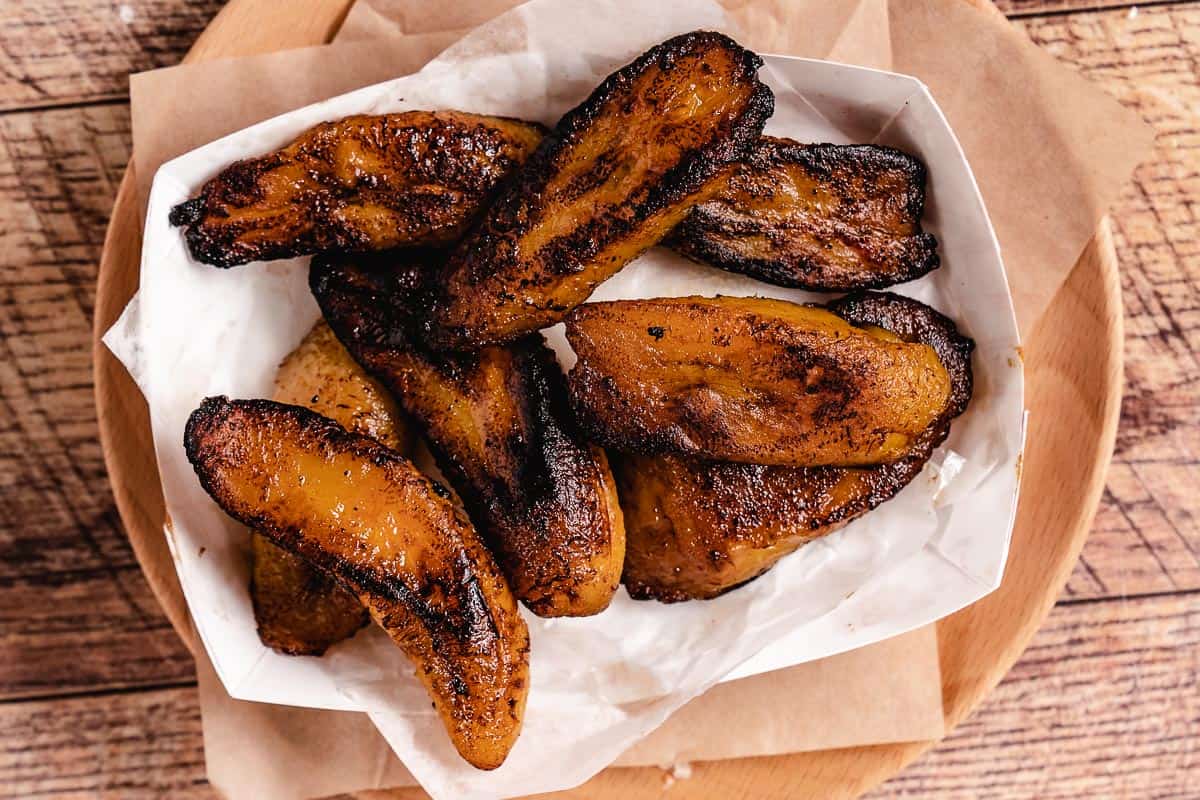
How To Store Tostones
Allow the tostones to cool completely to room temperature after cooking.
Place the cooled tostones in an airtight container. Store the tostones in the refrigerator for up to 2-3 days.
Reheat them in a skillet over medium heat with a little oil until crispy again. You can also eat them cold. They're quite yummy!
Serving Suggestions
Down here in the Keys, tostones are served as a side alongside fried mahi mahi or fish tacos in many restaurants. They're a perfect match for fresh, flavorful seafood!
For a fun summer gathering, serve these crispy treats on a platter with guacamole, mango pico de gallo, rice and beans, and fresh fruit.
Summary
Tostones, or twice-fried green plantains, are popular in many Latin American countries, including Puerto Rico, Costa Rica, and the Dominican Republic.
To make tostones, start by slicing plantains into thick rounds and frying them in warm oil for the first fry. Once the plantain pieces are soft, remove them from the oil, smash them using a flat surface or a heavy skillet, and then fry them again for the second fry until they're golden and crispy, creating crispy patacones.
Tostones are a great side dish or snack, enjoyed in many Latin American countries. They are a comforting and crispy treat that's easy to make and perfect for any occasion.
Recommended
Known as Tostones con Mayo Ketchup in Puerto Rico, these twice-fried sliced plantains make a unique and tropical appetizer or side dish.
Check out My Mom's Spanish Rice. – the real deal straight from Havana!
Serve tostones as a side with these Key West fish recipes for a homemade taste of the tropics.
FAQ
Tostones are a popular Latin American dish made from green plantains sliced and twice-fried until crispy. These savory snacks are known for their golden-brown exterior and tender, flavorful interior, making them a beloved treat enjoyed across various cultures.
Tostones are served immediately after seasoning. The crispy, golden-brown plantain discs are often presented as a side dish or snack, accompanied by dipping sauces.
A tostonera is a wooden utensil designed for flattening plantains. It consists of two flat pieces of wood connected by hinges, creating a tool specifically used in the preparation of tostones.
Patacones are the same as tostones—twice-fried green plantains. The term patacones is used in countries like Colombia, Venezuela, and parts of Central America.
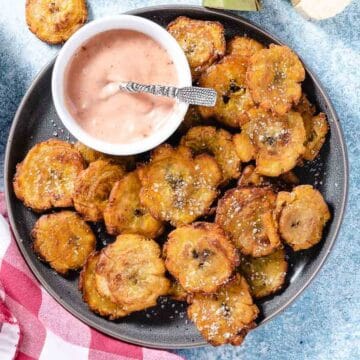
Twice Fried Plantains with Mayo Ketchup
Ingredients
FOR THE PINK SAUCE
- ½ cup mayonnaise
- 3 tablespoon ketchup
- 2-3 large garlic cloves pressed in garlic press or minced
FOR THE PLANTAINS
- 3 green plantains
- ½ cup cooking oil
- 1-2 tablespoons coarse salt
Instructions
FOR THE PINK SAUCE
- Combine mayonnaise, ketchup, and garlic in a small bowl; mix well. Refrigerate in a covered jar until ready to serve.
FOR THE PLANTAINS
- Slice the peeled plantains into 1-inch thick slices. (see bottom of recipe card for peeling instructions)
- Heat oil over medium heat in a heavy-bottomed skillet until it shimmers (about 3 to 5 minutes). Carefully add the plantain slices and cook for 1 ½ minutes until they turn golden and firm. Lower the heat slightly.

- Remove the plantains from the skillet with a slotted spoon and place them on a plate lined with paper towels to drain excess oil.
- Flatten each plantain slice using a tostonera (a plantain press), the bottom of a glass or the flat side of a meat mallet.

- Increase the heat again and return the flattened plantains to the hot oil. Fry for 2 minutes per side until they become crispy and golden yellow. You may need to fry them in batches, adding more oil if necessary.
- Once crispy, remove the plantains from the oil with a slotted spoon, place them on a paper towel-lined plate, and sprinkle with coarse salt. Serve immediately.
Notes
- Start by slicing off the tips of the plantain with a small knife.
- Create two shallow slits down the length of the plantain, being careful not to cut into the flesh.
- Insert the knife tip under the skin between the cuts and lift it slightly to make peeling easier.
- Grasp the peel in the middle and pull horizontally, unlike a banana's vertical peel.
- If the skin resists, make additional slits on the opposite side and repeat the process until the peel comes off


